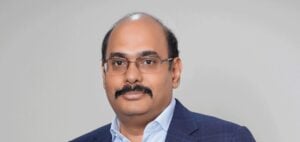The U.S. hydrogen industry, currently experiencing rapid growth, faces significant challenges linked to the uncertainty surrounding the clean hydrogen production tax credit, known as 45V. This credit is deemed crucial for ensuring the economic viability of green and blue hydrogen production projects.
According to Gonzalo Ramirez, vice president of clean ammonia at INPEX, the industry is awaiting clear guidance from the new federal administration to secure investments. “Stability and certainty are crucial for moving forward with engineering and development costs,” he stated during an energy conference held on December 4, 2024. However, the absence of definitive guidelines leaves partners and investors in a cautious holding pattern.
Momentum Stalled by Uncertainty
Ana Quelhas, managing director of hydrogen at EDP, emphasized that the lack of clarity around 45V compromises long-term decision-making. “Financing these large-scale projects becomes complicated in a context of uncertainty,” she noted, calling for swift resolution to avoid slowing the development of a promising industry.
Meanwhile, Tomeka McLeod, vice president of hydrogen at BP, highlighted the need to address unresolved issues related to blue hydrogen, including the integration of renewable natural gas (RNG) and low-carbon intensity technologies. According to her, better definition of these criteria would allow projects like BP’s to benefit from the full $3 per kilogram tax credit, making these initiatives globally competitive.
Potential for Global Leadership
Despite these uncertainties, the industry remains optimistic about the opportunities presented by 45V. Sanjay Shrestha, president of Plug Power, stated that effective implementation of the credit could position the U.S. as a global leader in clean hydrogen, particularly by driving demand and reducing costs to make green hydrogen economically competitive.
The Gulf Coast and Midwest regions stand out as strategic areas for blue hydrogen development due to existing infrastructure and relatively low production costs. According to Platts data, the average cost of production in the Gulf Coast using alkaline electrolysis was assessed at $2.91/kg in October 2024, one of the lowest levels globally.
Support Needed for Green and Blue Hydrogen
Through its project within the Midwest Alliance for Clean Hydrogen Hub, BP plans to develop a major facility supplying clean hydrogen to a local refinery and other regional consumers. However, as Tomeka McLeod explains, these efforts require a more stable political and economic environment to thrive.
The industry agrees that a concerted approach between public and private stakeholders is necessary to solidify progress. If 45V is structured appropriately, it could transform the U.S. energy landscape by supporting a transition to low-carbon energy solutions.






















